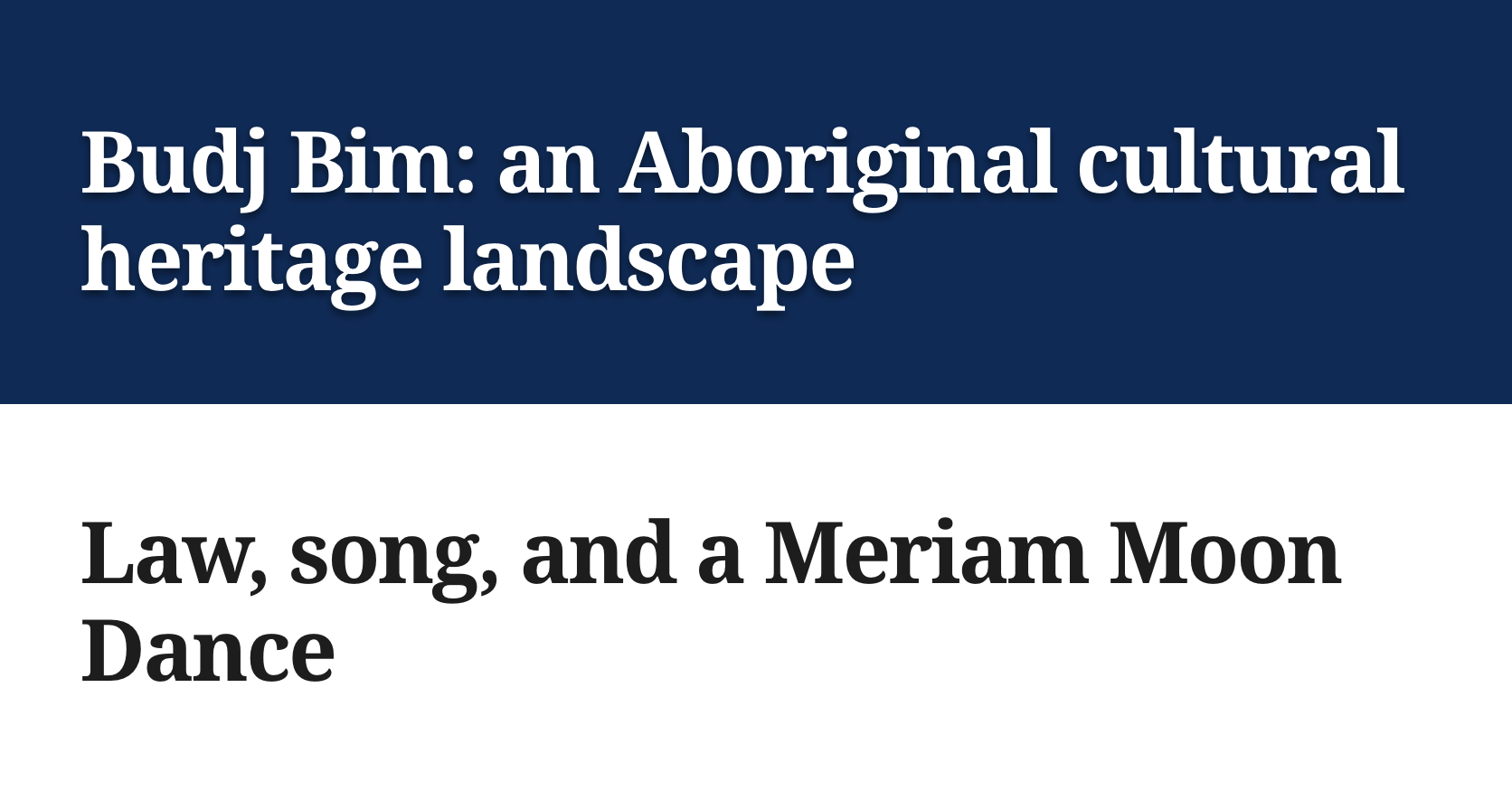Budj Bim: an Aboriginal cultural heritage landscape | Year 10

Produced By:
University of Melbourne
States:
Qld, NSW, SA, NT, ACT, Tas, WA
Aimed at:
Year 10
- 10
Curriculum 8.4
ACHGK072, ACHGK074
Curriculum 9.0:
Lesson Type:
Subjects:
Keywords:
Budj Bim, Aboriginal, Indigenous, Culture, Torres Strait Islander, Traditions, Heritage, Landscape, Environments, Gunditjmara
Budj Bim: an Aboriginal cultural heritage landscape | Year 10
The University of Melbourne’s Indigenous Knowledge Institute provides an educational opportunity for students to delve into the rich cultural heritage of the Budj Bim people. This comprehensive lesson plan offers a unique glimpse into the cultural connections of the Budj Bim people to their land, their ancient and innovative environmental management strategies, and the current context of collaborative management of their ancestral lands.
As part of this educational experience, students will explore the law, song, and Meriam Moon Dance of the Budj Bim people. This dynamic lesson plan allows students to further their understanding of the intricate relationships between indigenous cultures and the environment.
Individually or in small groups, students will conduct in-depth research on the cultural connections of the Budj Bim people to their land and the various environmental management strategies they have developed over the centuries. They will also explore the modern context of collaborative management of the Budj Bim lands and compare it to other examples of indigenous environmental management approaches across Australia.
This teacher resource from the University of Melbourne’s Indigenous Knowledge Institute is designed to incorporate global science issues into the classroom and develop students’ critical thinking skills. It also raises awareness of STEM careers and demonstrates how classroom science can be applied in the real world.
This lesson plan is a valuable tool for educators looking to incorporate indigenous knowledge and cultural heritage into their curriculum. Students will leave with a deeper understanding of the intricate relationships between indigenous cultures, the environment, and modern day management practices.
